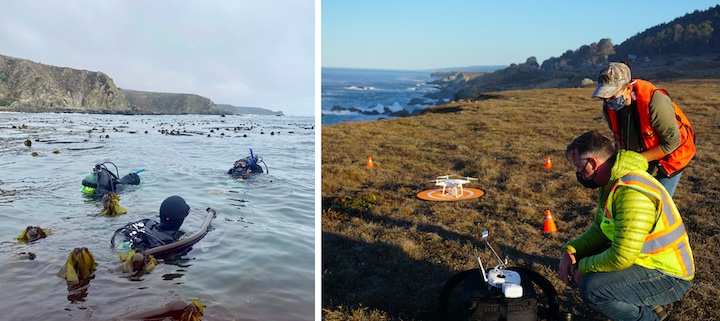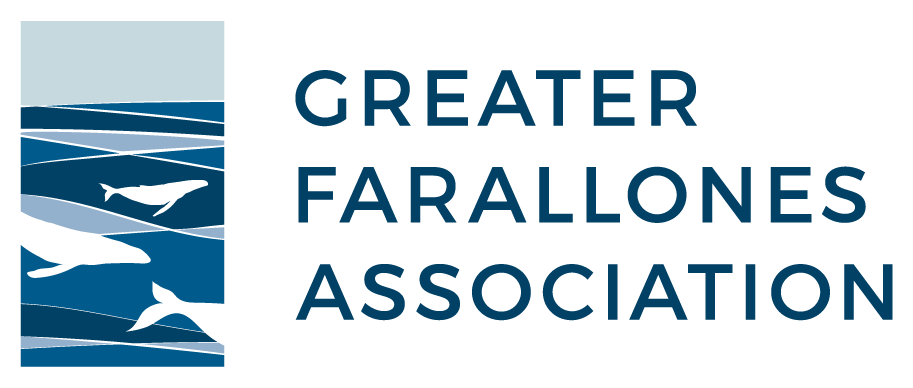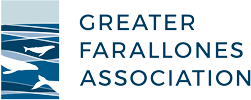Documenting Kelp Forest Conditions: Diving Deeper at Critical Restoration Sites

The Greater Farallones Kelp Recovery Program (the Program), a partnership between the Greater Farallones Association and Greater Farallones National Marine Sanctuary (the Sanctuary), continues to take critical steps toward recovering kelp forest habitat along Mendocino and Sonoma coastlines.
Since 2019, Greater Farallones staff have been working with The Nature Conservancy and academic partners to map what’s left of kelp forest canopy within the Sanctuary and identify the most ideal locations for upcoming active kelp recovery efforts.
In September, staff headed to the coastline with partners from The Nature Conservancy, the California Department of Fish and Wildlife (CDFW), and others, to document conditions at key kelp restoration sites. Drone pilots captured important data that will help inform restoration work.
The Program also recently completed shore-side surveys and a research cruise in collaboration with the National Oceanographic and Atmospheric Administration (NOAA), CDFW, and California State University Monterey Bay, aboard NOAA’s R/V Fulmar. The team surveyed key kelp restoration sites using drones to map kelp canopy cover; and SCUBA surveys to assess the number of invertebrates, fish and algae present and determine what natural barriers may exist, such as sand bars and pinnacles, to help protect kelp restoration sites from urchin encroachment.
The Program has also been working with scientists from the Kashia Band of Pomo Indians to establish a new kelp mapping site at the Kashia Coastal Reserve.
All of these efforts are aimed at creating the best possible scenarios for reducing urchin densities, actively planting kelp spores, and bringing bull kelp forest habitat back in the Sanctuary and along the North-central California coast. Each meticulous step in the process helps set the stage for effective and efficient kelp recovery activities planned for the coming year.
Keep informed on Greater Farallones Kelp Program updates through the Greater Farallones Association monthly e-newsletter, Facebook, Twitter, and Instagram.
Project Partners: This project is a partnership between Greater Farallones National Marine Sanctuary, Monterey Bay National Marine Sanctuary, Channel Islands National Marine Sanctuary, Greater Farallones Association, California Department of Fish and Wildlife, University of California Los Angeles, University of California Santa Barbara, Woods Hole Oceanographic Institution, California State University Monterey Bay, Hog Island Oyster Co, Kashia Band of Pomo Indians, National Marine Fisheries Service, and NOAA’s Center for Coastal and Marine Ecosystems.
This work is made possible with support from NOAA’s Office of National Marine Sanctuaries, National Marine Sanctuary Foundation, Tomberg Family Philanthropies, The Ocean Foundation, and dedicated individuals.
Read more about the Greater Farallones Kelp Recovery Program.

